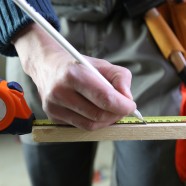
If you are installing a home standby generator, and you live in Florida, you are probably motivated by bad weather. Because sure, the energy savings you get when the power is out for a few days thanks to a big storm are good for your wallet, but they’re really not good for anything else, are they?
Before you contact contractors about your generator and to get a price for the electrical installation in West Palm Beach, it’s a good idea to figure out where you’re going to place the generator, and how you’re going to keep it safe from the storm. Because diesel powered generators really aren’t a great addition to the décor in your home, and the weather outside is likely to be a factor when it’s needed. Here are a few things to keep in mind while you construct the housing:
- Ensure that your design includes a raised platform of some kind, to keep your generator out of any water that may be on the ground. Storms can cause flash floods or water accumulation of a few inches to a foot or more, and it’s always a good idea to keep your generator above ground for that reason. Be sure to make the platform long enough that you can wheel the generator forward when you need to refill the fuel tank or make repairs to the unit.
- Make sure that you construct your generator enclosure close to your home. Whether you choose an automatic or manual transfer for the system, your electrician will need to connect wires to the generator, and you want to be able to get to it easily too.
- Measure the frame of the home standby generator, from the ground to the highest point, across at the widest point, and from the front to the back at the widest point. Add two or three inches to each dimension. Those will be your inside dimensions for your frame.
- Build a frame for the enclosure. You can make this out of wood or steel (depending on your carpentry or welding skills). Ensure that you use the measurements you have taken before as the inside dimensions for your frame. If your generator is going to be close to your home, you might not need a back panel, but you can add a front and a back panel if you hinge them for easy access.
- Cover the frame with plywood or steel sheeting. If you choose plywood, remember that you will need to seal the enclosure well, to prevent the wood from rotting. If you opt for steel, choose a galvanized product that will resist rust. Use screws or nails to fix panels to a wooden frame, or rivets to fix to a steel frame.
Your home standby generator is built to be hardy and tough, and it should be able to handle a little water without too much trouble. However, Florida storms are a lot more than a little water, which is why a home generator enclosure is a good idea. It doesn’t have to be completely air tight either. Just make sure it keeps most of the weather out, and that it’s located outside of your home, so the fumes from the generator running are safely outside your home.

Recent Comments